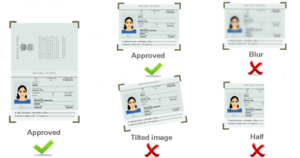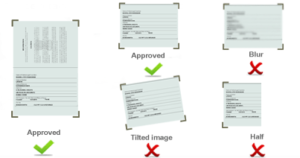Travelling to foreign countries requires a passport containing essential information about the holder. In addition, modern passports are equipped with an electronic chip containing this data that automated systems can read. There are specific fundamental characteristics that all valid passports possess, as well as distinct components that vary from issuing country to issuing country. A passport is usually necessary to board flights and pass through border control upon arrival; however, a visa is also required for several countries. Given the importance of passports for international travel, it may be beneficial to understand the defining features of a passport.
On both sides of the passport cover, information is usually printed. The information on a passport was once just printed, but modern passports incorporate electronic chips or have machine-readable zones on the data pages, making them machine-readable. It is important to remember that many nations issue various passports with varied designs and functions. The sections that follow give an overview of each element of a passport:
Front Cover

A passport’s front cover typically displays a variety of information regarding the document, including the following:
- Name of the issuing nation
- national logo of the nation
- a description of the document’s type
- biometric identification
Title Page
The first page is usually called the title page. Here is the following description:
Data page of a passport
The data page is the following page. It takes up pages two and three of the document. You can discover all the pertinent information on the traveller here, along with a picture of them. These specifics consist of:
- Name
- Nationality
- Date of birth
- Place of birth
- Passport number
- Date of issue
- Date of expiry
- Place of issue
The traveller’s picture is displayed on this page’s left side. The visitor faces the camera in a genuine snapshot of the traveller’s face against a background of pure white. The biometric passport holder’s signature may also be on the data page. An MRZ is located at the bottom of the page of biometric passports. Mandatory information about the traveller’s identity is included in this MRZ.
Blank pages
Following the data page are other blank pages that can be stamped when you enter and exit additional nations.
The back of a passport

There may be some general travel advice at the end of the passport and a page where you can list your emergency contacts. Typically, the back cover is empty.
Passport Machine-Readable
Examining the passport’s front cover is the leading way to tell whether an electronic or biometric passport has a biometric sign. This biometric sign has a circle in the middle of a rectangular form with a horizontal line running through it. It resembles a camera. A Machine Readability Zone (MRZ) will also be present on the data page of an electronic passport beneath the traveller’s picture and personal data. Essential details, including the traveller’s name and passport number, are located in this area. In the MRZ, words and numbers are separated by “<” symbols rather than spaces.
What Are the Pages in a Passport for?
The data page is the most essential part of a passport. This page is used to verify the passport holder’s identification. To verify that a traveller is who they are, border security personnel can review the data page’s contents and compare the traveller’s image to their face. The data page of current passports contains electronic information that can be read by airport electronic passport gates, making it more straightforward for travellers to pass through border control checkpoints. Although they could have pictures of the nation issuing the document, most pages are blank. These pages are made with stamping in mind. Passengers may acquire stamps when they enter a
